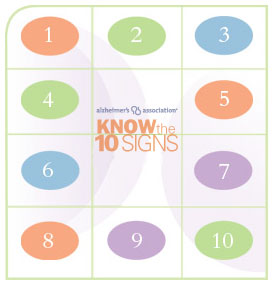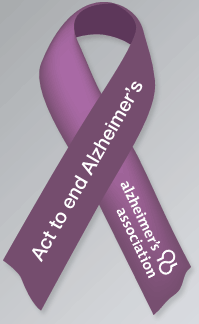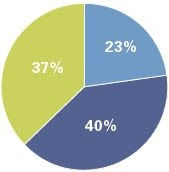If you remember the comedy duo of
Cheech and Chong then the news of the last few weeks should have you either angry or "mellowed out." In the news from California is the most recent of study suggesting that marijuana (called cannabis by the scientific community) is good.
"In total, the (Center for Medicinal Cannabis Research) CMCR has approved fifteen clinical studies, including seven clinical trials, of which five have completed and two are in progress. The CMCR has also approved four pre-clinical studies, all of which have completed... ...(W)e now have reasonable evidence that cannabis is a promising treatment in selected pain syndromes caused by injury or diseases of the nervous system, and possibly for painful muscle spasticity due to multiple sclerosis. Obviously more research will be necessary to elucidate the mechanisms of action and the full therapeutic potential of cannabinoid compounds. Meanwhile, the knowledge and new findings from the CMCR provide a strong science-based context in which policy makers and the public can discuss the place of these compounds in medical care. The book isn't closed though the study is in it's earliest of stages even in California." - Report Feb 2010 (PDF)

Now if the west coast news "chaps your nerves" you'll be gladden that those "pot smoking long hairs" are going crazy thanks to the news from
AOL,
CBS and
Reuters news service from "the land down under." The recent research unfortunately when you examine the source, you'll discover that the University of Queensland has more than a few studies on the wicked cannabis. Just look at the dates and we know that in this instance that the research began in 2007 with data retrieved from the eighties babies.
"Association of maternal smoking and alcohol consumption with young adults' cannabis use: a prospective study... Prevention programs that address maternal and adolescent tobacco use and adolescent externalizing behavior should be considered as strategies to reduce cannabis use by young adults." - American Journal of Epidemiology (Sept 2007)
OK so since we're not tokin' or smoking so how does a study, first released in 2007 about research performed on eighties pregnant adults have to do with getting high and going bonkers? Didn't we tell you that it was a study on Pregnancy? Oh, Yeah!
"Association Between Cannabis Use and Psychosis-Related Outcomes Using Sibling Pair Analysis in a Cohort of Young Adults - Three thousand eight hundred one young adults born between 1981 and 1984 as part of the Mater-University Study of Pregnancy... Early cannabis use is associated with psychosis-related outcomes in young adults. The use of sibling pairs reduces the likelihood that unmeasured confounding explains these findings. This study provides further support for the hypothesis that early cannabis use is a risk-modifying factor for psychosis-related outcomes in young adults." - The Archives of General Psychiatry (March 2010)
That seems like the researchers were smoking the whole time they should have been doing research. They definitely seem grass obsessed. Whether its a seminar or making the original data from this early study stretch out year after year after year. The University of Queensland also held series like:
"Seminar - Cannabis prices and dynamics of cannabis use by Dr Jerry Williams, Department of Economics, University of Melbourne" (Sept 2006)
Talk about getting the most from your research dollar the University of Queensland takes that to a whole new level. Which is why it should mostly be ignored on the "pot drives you crazy front." Try to search for terms like grass and marijuana and you'll come up short. They take their cannabis seriously. This is the same year (2006) of the "setting prices" for your "grass class."
"In 2004 the Queensland (Illicit Drug Reporting System) IDRS documented an increase in the prevalence of heroin use among intravenous drug users (IDU), although the average frequency of use decreased. This was mirrored by a decrease in the use of crystal methamphetamine (‘ice’). There was little change with respect to cocaine use which continues to be infrequent and largely opportunistic among IDU in Queensland. As in previous years, around three quarters of IDU in Queensland reported recent cannabis use (usually hydroponic cannabis) although the average frequency of use among IDU may be increasing." - University of Queensland (2006)
The above mentioned information only cost them a mere $52,000. In 2006 serious drug users may been increasing their "grass" use. The re-release of the earlier grass study using the same subjects and data resurfaces again with the following info:
"Child and adolescent externalizing behavior and cannabis use disorders in early adulthood: an Australian prospective birth cohort study." - (March 2008)
Were not hating the Australians and indeed we appreciate other research from the University as long as its of the non-drug related variety. Specifically we're impressed and hopeful by the following study also released in the same year from the university:
"Queensland Brain Institute (QBI) neuroscientists at UQ have discovered a new way to reduce neuronal loss in the brain of a person with Alzheimer's disease... QBI neuroscientist Dr Elizabeth Coulson already has patented molecules that can block p75 and is ready to begin testing them in animal models of Alzheimer's disease. “If such therapy is successful, it probably wouldn't cure this multifaceted disease,” Dr Coulson said. "But it would be a significant improvement on what is currently available for Alzheimer's disease patients.” The World Health Organisation predicts that by 2040, neurodegenerative conditions will become the world's leading cause of death, overtaking cancer. Alzheimer's disease is the most common dementia affecting 10 per cent of people over 65 and 40 per cent over 80 years of age." - The Journal of Neuroscience (June 2008)
The study finds out other things on the way to it'll drive you crazy message for "dope heads." It's these earlier conclusions again from the same researchers that reached other conclusions that point to things other than smoking the weed as reasons for lacking normalcy. For instance in 2009 from the very same cannabis study found:
"There are a number of strong predictors of cannabis use identified in this study. They suggest that the social context within which children are reared has a major influence on cannabis use and use disorders." - The American Journal of Drug and Alcohol Abuse (2009)
When you start with a group that is less than healthy psychologically and then you add something like, oh, say, sexual abuse, we're not talking about a cross section of the community here though it does make a good cautionary tale for teens. From
February of the same year the study results reached these conclusions:
"(C)hildren experiencing (c)hildhood sexual abuse (CSA) have a substantially greater risk of use of cannabis and, in particular, its frequent use in early adulthood. Further research is required to explore factors that explain the pathway linking CSA and use of cannabis in early adulthood." - Archives of Sexual Behavior (Feb 2009)
The Queensland research can be a bit obvious in its conclusions and even with it's need to detail the obvious with science. However we suspect (without any evidence) that the researchers are the same ones who were the test subjects in the eighties born dope study. This is actual research from the University of Queensland:
"UQ research finds that attractive women increase risky behaviour in young men - The Presence of an Attractive Woman Elevates Testosterone and Physical Risk Taking in Young Men (March 2010)"
The University is spending more on space toys (
$14m) than cancer (
$7m). Which we find extremely disturbing because: "Cancer is the No. 1 killer of Australians. One in every three Australians will be diagnosed with cancer in their lifetime." That concerns us, much like our criticism of the District of Columbia on a
snow emergency day when accidents are that jurisdiction third leading cause of death. Since the Aussies are number one (1) ignoring their number one (1) killer makes us especially critical of their old "eighties born" drug facts, as should you.
What we couldn't ignore as this research from the "land down under" stating that
men make women fat:
"A University of Queensland study has found that women who live with a partner gain more weight than those without a partner or child. The study, published in the January edition of The American Journal of Preventive Medicine (AJPM), also found that women also experience a larger weight gain after having their first baby." - (2010)
What is it with "UQ" and pregnancies? Again the information started out studying the pregnant but somehow it ended up being the fault of their husbands or boyfriends. She's fat and it's all your man's fault.
If you want to know where the University of Queensland first got started with "all things marijuana" it might be because of their hemp industry. We also found this information from the late nineties long after the recent research published this month was finished and being collated.
Industrial Hemp-Research and Development in South Australia - (July 1995)
While you might not be interested in the following information we thought this is probably the best and safest way to enjoy the "
wacky tobacky" is through the comedy of Cheech and Chong whose characters might have migrated to Australia where they're now researchers at the University of Queensland. We do know that viewing their concert is legal in most of the country. Well probably.
"In 2008, two of the country's most beloved comedians -- not to mention the most beloved stoners of all time -- got back together after decades apart for the Light Up America tour. The reunion with Richard "Cheech" Marin was "incredible," Tommy Chong reveals. "When I'm out there by myself, I've got too much to prove, but when I'm with Cheech, all we have to do is what we've always done. And that makes life much easier." (Tour Info)
If anything, the tour and the concerts will certainly be alot more humorous than the details of the research from University of Queensland. Who knew that California would be at the forefront of legitimate marijuana research. Unfortunately it doesn't reach the research conclusion that many people would hope it would. It is however the most recent and reputable. Smoking grass might get you arrested and probably smoking a lot might not be good for you but crazy? That's crazy talk!
























